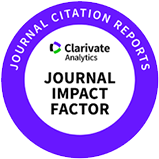Influence of anatomical origin on muscle stem cell characteristics during early postnatal myogenesis in Berkshire piglets
Abstract
We investigated the biological and molecular characteristics of porcine muscle stem cells (MuSCs) derived from three anatomically distinct skeletal muscles [<italic>triceps brachii</italic> (TB), <italic>longissimus dorsi</italic> (LD), and <italic>tensor fasciae</italic> (TF)] in 2-week-old male Berkshire piglets. Myofiber typing revealed no significant differences in fiber composition among the muscles, indicating an early stage of muscle development. MuSCs were isolated using magnetic-activated cell sorting (MACS) and evaluated for cell yield, proliferation, differentiation, and gene expression profiles under <italic>in vitro</italic> conditions. Although the proportion of CD29⁺ MuSCs was significantly lower in LD than in TB and TF, no differences were observed in proliferation rates, differentiation efficiency, or the expression of key myogenic regulatory factors (<italic>PAX7</italic>, <italic>MYF5</italic>, and <italic>MYOD1</italic>). Similarly, expression patterns of myosin heavy chain isoforms (<italic>MYH1</italic>, <italic>MYH2</italic>, <italic>MYH4</italic>, and <italic>MYH7</italic>) did not differ significantly among muscle sources. These findings suggest that, at this early developmental stage, the anatomical origin of skeletal muscle has minimal impact on the functional properties of MuSCs. This study provides foundational data for selecting MuSC sources in muscle biology research and emphasizes the need to standardize developmental timing in comparative studies.
















